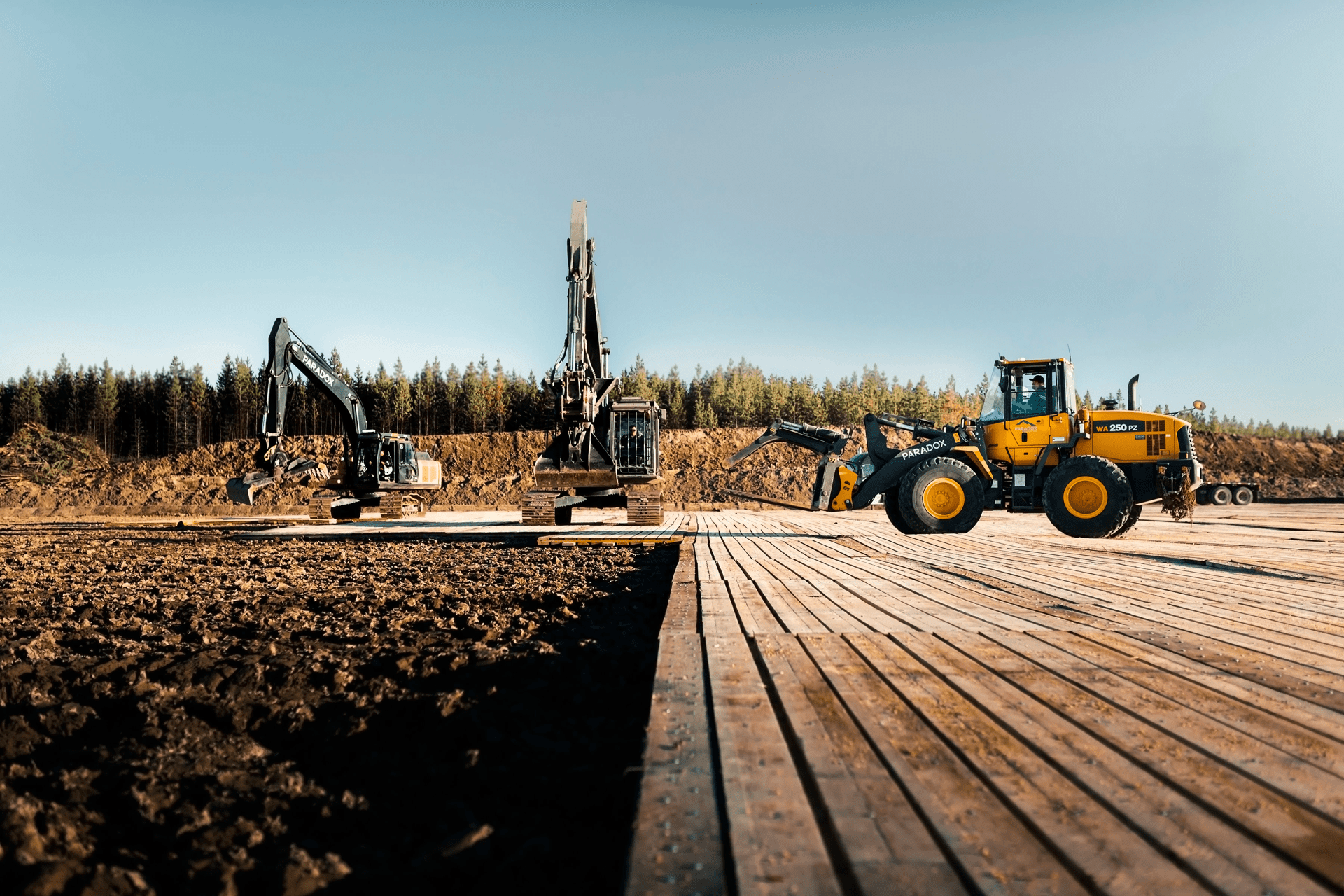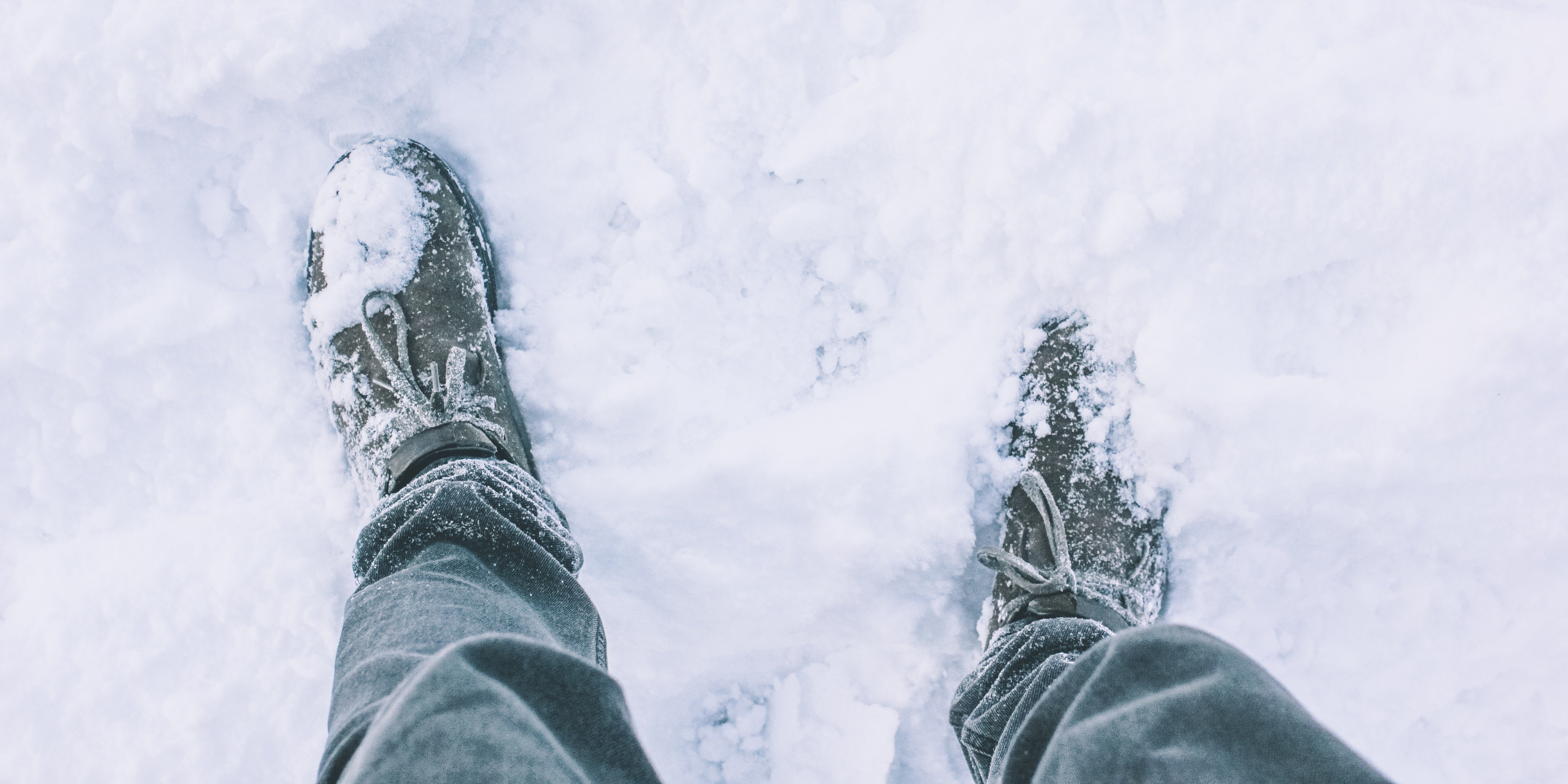27 March 2020
How to Maximize Safety and Minimize Incidents During Spring Break-up
Spring break-up — that lovely time of year when freeze-thaw cycles abound, transforming what was...

Paradox's Blog is a hub for thought leadership in the areas of construction, engineering, project management, leadership, and business in the civil construction and geotechnical engineering industries.

25 October 2019

While a fluffy layer of freshly-fallen snow can easily transform an average scene into an Instagram-worthy backdrop, it also presents challenges for those of us who earn our livelihoods by working in the elements.
When it comes to working in outdoor environments, winter preparedness involves many steps. Depending on your role, some of these might be out of your control — such as winterizing your work site and implementing appropriate safety procedures.
The good news is, there are proactive measures you can take to reduce your risk of cold stress and cold-related injuries and illnesses no matter what your role and responsibilities might be.
Let's get into it.
As mentioned in an earlier blog post, cold stress is what happens when your body can no longer maintain a normal internal temperature. Frost bite and hypothermia are among the most common consequences of cold stress.
One of the most surefire ways to keep cold stress and its ensuing consequences at bay is by being properly prepared — specifically by knowing what cold-weather clothing and personal protective equipment (PPE) to wear.

The key to dressing for working-in-winter weather can be summed up in one simple word: layers.
Dressing in layers is important for many reasons. First, wearing multiple layers actually insulates better than wearing a single heavy garment. This is because the air between each layer of clothing is what keeps your body warm — not necessarily the garments themselves.
Second, dressing in layers grants you the ability to adjust for changing circumstances such as fluctuating temperatures and/or weather conditions. Layers also allow you to accommodate different levels of physical activity, giving you the option to remove layers one-at-a-time as needed to prevent sweating.
That last point is important to keep in mind because excessive sweating can quickly become a catalyst for cold stress and related illnesses and injuries. Water drives heat away from the body 25 times faster than warm air, which means sweating in cold weather will actually cause your body to get cold faster.
So, how many layers constitutes "enough" for adequate protection from frosty winter weather? The generally accepted rule of thumb is a three-layer minimum:
This is your base layer, which should work to provide insulation and keep moisture away from your skin to keep it dry.
Have you ever heard of fabrics or garments that promise to "wick" away sweat? These types of garments are specifically-designed to pull moisture away from the skin using capillary action.
Sweat-wicking clothing and thermal wear made from wool, polyesters, or polypropylene are ideal for your base layer, as these materials wick moisture away from the skin (unlike materials such as cotton, which easily absorbs moisture and can therefore actually accelerate the onset of cold stress and its related consequences).
Your middle layer should also be of the moisture-wicking type. Clothing in your middle layer should be loose (so as not to squeeze all the insulting air out of the inner layer) and easy to open and/or remove should you need to accommodate factors such as varying levels of activity or changing weather conditions.
When it comes to dressing for winter conditions, your outermost layer should be waterproof to protect against wet elements such as snow.
Some jackets are designed with mesh vents (usually around the trunk and under the arm pits) that can be easily opened and closed with zippers or Velcro fasteners. These make for a great outer layer as they provide an additional means of adjusting to changing conditions, giving you more control over the amount of heat you wish to retain (or give off).
It's important to note that successive outer layers should be larger than your innermost layer to maximize the insulating properties of your clothing. Remember the insulating property of air we talked about at the beginning of this post? Well, that can only happen if there's enough room between your layers for said air.

Now that you've got the art of layering down pat, it's time for us to do a top-down run-through of what these layers should look like to keep you (and all your extremities) toasty warm.
Our heads are among the major heat-loss areas of our bodies. To prevent excessive heat loss, wear a hat designed to keep your head (and your ears!) warm. If your work requires you to wear a hard hat, a knit cap or liner is still recommended.
Consult with your hard hat supplier or manufacturer to discuss your options for liners that won't compromise the protection provided by your hard hat.
If your work requires you to use protective eyewear in extremely cold conditions, your eye protection should be separate from your nose and mouth to prevent moisture from fogging up your eyewear and compromising your vision.
It's also wise to consider using eyewear to protect against UV sunlight and glare from the snow to keep photokeratitis — aka snow blindness — at bay. Eyewear can also help shield your eyes from blowing snow and ice crystals, as well as high winds at cold temperatures.
Did you know: Clean snow reflects as much as 90% of sunlight. That's a lot of light (and UV rays) for human eyes to handle without protection!
The final touch? A scarf to keep your neck warm.
This is where the three layers we discussed earlier really shine. Start with a sweat-wicking inner layer (clothing made from materials such as silk, thin wool, or polypropylene are recommended), a slightly larger sweat-wicking middle layer, and an even larger waterproof outer layer.
When it comes to these handy extremities, gloves and mittens are where it's at. As the CCOHS explains: "If fine manual dexterity is not required, gloves should be used below 4°C for light work and below -7°C for moderate work. For work below -17°C, mittens should be used."
Simple as that.
Just like with the rest of your winter clothing, layering socks can help keep moisture out and hold heat in. Thin, moisture-wicking fabrics such as silk, thin wool, or synthetics made of polypropylene make an excellent inner sock layer. Wrap that up with a thick second layer and you've got yourself a nice warm foot burrito.
Pro tip #1: Keep an extra pair (or two) of outer-layer socks handy in case the ones your wearing start to get damp. Dampness will reduce the insulating properties of your socks, and can act as a catalyst for cold stress.
Pro tip #2: Be mindful of the thickness of your socks. If they're too thick, your boots will feel tight, meaning there will be no room for insulating layers of air to exist and keep your feet warm. Tight boots can also cause poor circulation, which puts you at a higher risk for cold injuries.
Layers aren't the only winter clothing tip that's done best in threes — according to the Canadian Center for Occupational Health and Safety (CCOHS), the ideal footwear for winter work should be a boot with these three features:
As CCOHS explains, boots that meet these criteria "are best suited for heavy work in cold since leather is porous, allowing the boots to 'breathe' and let perspiration evaporate".
While there are some products out there that can effectively "waterproof" leather boots, these products don't usually block the pores in the leather. That means if your work involves standing in water or slush, actual waterproof boots must be worn.
Remember: While waterproof footwear protects your feet from getting wet, they also prevent moisture on the inside from getting out. This means your socks will get wet faster than they would in leather boots, which increases the risk of frostbite.
Dressing for the cold might sound simple at first, but — in reality — there are many considerations you should take into account to adequately protect yourself from the harsh winter climate.
Remember: Putting in the extra effort now will *literally* save you in the cold, snowy days ahead.
It is a long established fact that a reader will be distracted by the readable content of a page when looking at its layout.
27 March 2020
Spring break-up — that lovely time of year when freeze-thaw cycles abound, transforming what was...
11 October 2019
Winter is coming... along with extreme weather and environmental conditions, which can greatly...